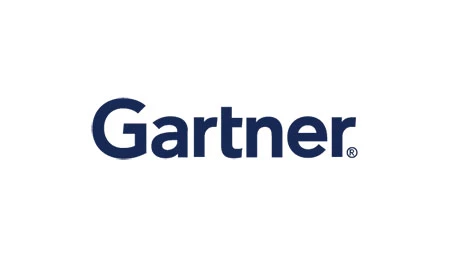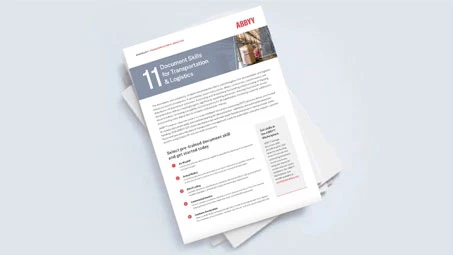Understanding your operational workflows is key to implementing and sustaining business improvement. A clear view of your business processes allows you to operate more efficiently, adapt quickly, and make smart decisions. That’s why many businesses are turning to process discovery, a powerful set of techniques that enables you to visualize, analyze, and understand your processes so you can strategically improve and automate them.
By harnessing the insight revealed through process discovery, you can keep your business agile and competitive. However, process discovery is only the beginning of data-driven process improvement. To fully reap the benefits, you need an advanced tool that takes a comprehensive approach to process excellence to drive greater efficiency.
Jump to:
Process discovery definition
Process discovery vs process mining
What are the benefits of process discovery?
How does process discovery work?
What should you look for when selecting a process discovery solution?
Process discovery examples and use cases by industry
Process discovery challenges
What are the expected outcomes of process discovery?
Process discovery and an intelligent automation platform
Process discovery is a strategic technique for gaining a deep understanding of your organization's workflows. Think of it as a critical first step in visualizing and analyzing how your business processes function in their “as-is” state. Process discovery is a foundational element of process intelligence, which builds on the intelligence gained from process discovery through process analysis, process monitoring, process prediction, and process simulation. By integrating the insights gained through these key capabilities, process intelligence solutions empower businesses to implement continuous process improvement and optimization across the organization.
Process discovery involves two key techniques: process mining, which analyzes data from system logs to reconstruct workflows, and task mining, which captures user activities on desktops to fill in any missing details. This combined approach is essential for identifying bottlenecks, redundancies, and deviations.
Manual business process discovery vs. automated business process discovery
In the past, process discovery was manual—involving interviews with workers, in-person observations, and the like—to map out workflows. While these techniques are still useful today, when employed alone, they can be time-consuming, subjective, and error-prone. In addition, many processes today are complex and hidden within technology systems, so manual discovery may overlook inefficiencies or undocumented steps in digital workflows.
Today, many businesses opt for automated business process discovery. This method retrieves data from system logs and digital workflows, capturing real-time process execution using tools like process mining software and AI-driven analytics platforms. Automated discovery provides more accurate and comprehensive information alongside rapid analysis of large datasets, making it a faster, more scalable solution for both SMEs and large organizations.
Process mining is a key component of process discovery. Let's first explore the broader concept of process discovery, then zoom in to see how process mining fits into it.
A foundational step in understanding how processes actually work, process discovery provides a window into how processes function in practice—bringing clarity to support initiatives like robotic process automation (RPA). By revealing the "as-is" state of operations, process discovery identifies areas for improvement.
Next-generation process discovery tools offer you multiple perspectives of how your processes function based on the nature of the process and your specific goals. The tools can visualize even the most complex or unstructured workflows, including those with high variability or ad hoc steps that don’t fit neatly into traditional flowcharts. This ensures that even these unpredictable processes deliver consistent results and avoid unintended consequences.
Process mining, in contrast, is just one technique used in process discovery. Process mining is used for reconstructing processes from events recorded in logs, providing detailed, data-driven insights into how processes are executed in real-world scenarios. Essentially, process mining supports process discovery by providing the insights necessary to map out processes accurately and uncover areas for improvement.
By giving you a crystal-clear understanding of your operations, process discovery lays the groundwork for smart, high-impact business decisions. With this information, you can:
Clearly understand business processes
Because process discovery lets you see your exact workflows, it enables you to spot any differences between how you think things are working and how things truly are working. This lets you find hidden bottlenecks and other opportunities for improvement in your operations.
Identify inefficiencies
Process discovery illuminates opportunities to accelerate workflows and optimize resource allocation, empowering organizations to respond faster and adapt more readily to changing market demands. It can also reveal high-value opportunities for implementing automation such as RPA. By eliminating repetitive tasks, it also fosters a more fulfilling work environment and improves employee satisfaction.
Save time and effort
Process discovery can accelerate the process of understanding and documenting business operations. By eliminating the need for extensive manual effort, it provides quick observations, enabling rapid improvements and freeing up teams to focus on strategic work rather than tedious data collection.
Enhance decision-making
With process discovery, you can take a data-driven approach to identify high-impact areas in your workflows, enabling strategic resource allocation. Accurate data into process performance also enhances planning and execution of automation initiatives, ensuring that business improvements align with your goals.
Improve scalability
Leveraging process discovery allows companies to map and assess processes across large datasets. Even as a business grows or introduces new processes, discovery and analysis can keep up without significant increases in time or resources, enabling ongoing optimization while maintaining high productivity.
Process discovery requires systematically documenting and analyzing business operations. The steps involved include:
- Recording user interactions: The first step in process discovery is to gather session logs, capturing how tasks are actually performed over time without disrupting your day-to-day operations.
- Capture data: Data is extracted from various sources within the organization—such as system logs, transaction records, and employee inputs collected from any combination of enterprise and departmental software systems.
- Mapping processes: The collected data is used to create detailed process maps—visual representations that outline each step in the workflow, including inputs, actions, and outputs.
Choosing the right process discovery solution is selecting the perfect tool for a complex job—one that not only can do the work but also enhances every aspect of the task at hand. To make the most of your investment, look for the following essential features:
Integration with existing systems
Make sure your process discovery solution connects with a wide range of business platforms and systems. A truly effective solution should seamlessly integrate with your existing IT infrastructure, like your enterprise resource planning (ERP) and customer relationship management (CRM) systems. This ensures smooth data sharing, breaks down information silos, and minimizes disruptions to your operations. Look for tools that offer robust connectors and application programming interfaces (APIs) to ensure compatibility with your current technology stack. Ideally, your tool offers a one-stop solution to visualize and analyze your processes across all your systems.
Real-time insights
Choose a process discovery tool that provides live data and updates on process execution, allowing you to monitor operations as they happen so you can take prompt action. With real-time event log data, your tool can serve as a single source of truth to ensure all decisions are based on accurate, unbiased information. This level of visibility supports dynamic decision-making and helps keep your processes aligned with current business needs.
Advanced analytics
Process discovery solutions that use sophisticated algorithms and AI to analyze process data and provide a deeper dive into process performance. This gives you a more nuanced understanding of your processes so you can identify patterns, trends, and anomalies that may not be apparent through basic analysis.
Automation capabilities
A tool that automates the discovery and mapping of business processes can dramatically cut down on manual work and speed up the process of understanding your operations. It makes it possible to finally see the process end to end, even when multiple steps and systems are involved. By visualizing processes in a way that is not possible manually, it provides additional insights for improvement. This not only leads to more accurate results but also frees up your team to focus on actually improving those processes. Plus, automated tools can easily adapt as your processes evolve, ensuring your information is always up-to-date.
User-friendly interface
To ensure all team members can effectively use the process discovery tool, the interface should be intuitive and easy to navigate. A well-designed interface reduces the learning curve and helps users quickly access and understand process maps and data without extensive training. Opting for a low-code platform is ideal, as it allows non-technical users to easily interact with the tool and make adjustments without specialized coding skills.
Finance
In the world of finance, process discovery can be transformative. It not only helps you spot gaps in your records to stay compliant but also ensures your financial reports are accurate and timely by mapping out every step of your data handling. Financial institutions can then streamline their operations and boost accuracy.
Accounting
Process discovery can uncover hidden inefficiencies and risks in accounting by identifying bottlenecks—such as delays in invoice approvals or data entry errors in your accounts payable process. It also helps improve reconciliation, highlighting areas prone to mistakes and automating repetitive tasks. By connecting the dots between different accounting activities, process discovery improves compliance and accuracy.
HR
Process discovery can optimize HR functions such as recruitment, onboarding, and employee management. For instance, by mapping out the recruitment process, organizations can identify slowdowns in the hiring process and fix them to allow for quicker hires and better candidate experiences. During onboarding, process discovery can highlight unnecessary complexity in paperwork processing and training schedules. Additionally, it can reveal gaps in performance review processes and benefits administration, making your HR team more effective and responsive.
Insurance
Process discovery can greatly improve efficiency and customer satisfaction in the insurance industry. By mapping out every step of a claim, from its initial submission to the final decision, process discovery can highlight areas for improvement to achieve faster approvals with fewer errors. Process discovery also helps you fine-tune your underwriting process, making sure you're assessing risks accurately and setting fair premiums while staying in line with changing regulations.
Customer service
Process discovery can map the entire customer journey, from first contact to final resolution. This bird's-eye view enables you to improve everything from welcoming new customers to ensuring swift responses to common queries. For example, if you discover support tickets are getting stuck and causing delays, process mining can reveal the cause, allowing you to problem-solve effectively.
Telecommunications
Through process discovery, telecom providers can optimize their customer onboarding, billing, and service processes to reduce errors, accelerate response times, and enhance overall service quality. Process discovery can also be used to improve the management of network maintenance and fault resolution by improving workflows.
Insufficient tools and technology
Inadequate tools for process discovery can limit the ability to capture, analyze, and visualize processes effectively, hindering your ability to implement improvements and capitalize on optimization opportunities. In addition, some processes can be highly complex and involve multiple departments or systems, making them difficult to map accurately using manual processes.
Lack of complete, real-time data
While advanced process discovery tools provide up-to-the-minute information, organizations that rely on less robust technology may struggle with outdated or static data and incomplete process maps that fail to reflect current workflows. This lack of real-time visibility can hinder your ability to respond swiftly to market changes or internal challenges.
Difficulty adapting to changes
In some cases, employees might resist changes or feel threatened by process discovery efforts, which can impact the accuracy of the data collected and the successful implementation of new processes, particularly when relying on manual methods. To address these challenges, effective process discovery solutions should be data-driven and offer dynamic capabilities that can swiftly accommodate and respond to changes.
Who are the typical stakeholders in the process discovery process?
Typical stakeholders in the process discovery process include company executives, automation leaders, process team members, and employees at many different levels of the organization. Executives, for example, get involved in decision-making and identifying opportunities for improvement, while process teams play a key role in analyzing and mapping out existing workflows. Frontline staff and department managers can provide valuable insights into day-to-day operations and pain points.
When considering technological implementations like intelligent document processing and RPA, stakeholders may include IT teams. But because not all stakeholders in the process will be technology experts, a tool that’s accessible to both technical and non-technical users is essential. Additionally, external consultants or process discovery specialists might be brought in to provide expertise and an objective perspective. Each of these groups contributes unique knowledge and perspectives to ensure a comprehensive understanding of business processes and potential areas for enhancement.
Process discovery provides a baseline for process refinements by making transparent the current state of your business processes so you can quickly identify which processes to improve. When enhanced with process intelligence, process discovery offers total visibility of processes, drastically reducing the time needed to examine and understand every process execution scenario. This clarity lets you optimize processes, reducing costs while optimizing overall performance. Additionally, process discovery supports continuous improvement efforts and helps ensure compliance even as regulations change.
What is the difference between process discovery and task mining?
Process discovery and task mining are both techniques used to analyze and optimize business operations, but they focus on different aspects of process analysis. Process discovery aims to provide a comprehensive view of the overall business processes. Task mining, in contrast, is one technique of process discovery that zeroes in on the specifics of how tasks are executed by capturing real-time data—such as user interactions—to offer a granular view of task execution. Basically, while process discovery provides a high-level view of end-to-end processes, task mining offers a detailed look at the execution of specific tasks within those processes.
How does process discovery help with robotic process automation (RPA)?
Process discovery enhances RPA by offering a clear and detailed view of existing business processes. Using process intelligence, organizations can chart current workflows and identify processes that are ready for automation. This simplifies the task of determining which processes will gain the most from RPA, reducing the guesswork and trial-and-error often involved in process improvement. Plus, by identifying issues early, organizations can better prepare for RPA implementations, leading to smoother transitions and more successful automation results.
For effective process discovery, you need a comprehensive tool that provides real-time, actionable information that can guide you to streamline workflows and eliminate errors. That's what ABBYY Timeline is designed to do. Timeline automates the collection and analysis of event log data from various systems and user interactions, offering full visibility into your processes. It creates an interactive digital twin—a real-time, virtual representation of your processes—allowing you to identify areas for further attention with ease.
Plus, with its low-code interface, Timeline enables non-technical users to get started quickly. Unlock the potential of ABBYY Timeline to transform your process management and keep your organization agile and competitive in an ever-changing business environment.







